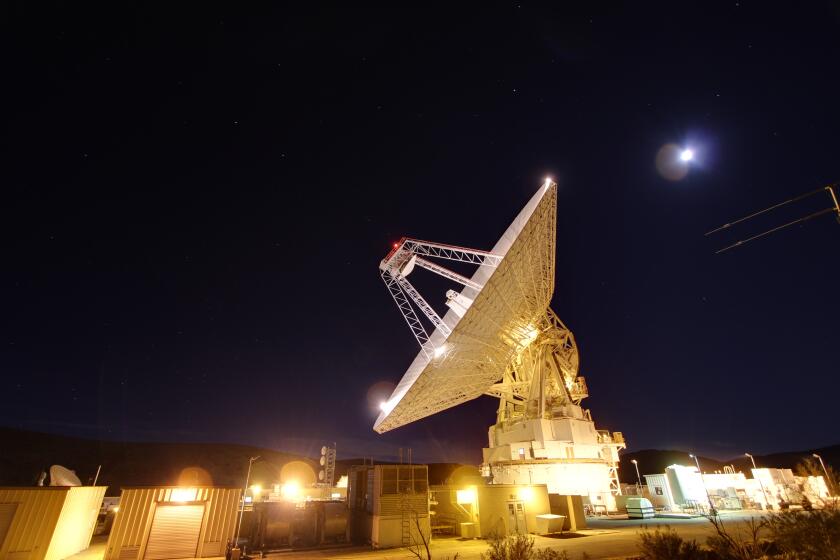JPL to lay off roughly 5% of its workforce

- Share via
- JPL will lay off about 325 employees, in the third staff reduction this year.
- The layoffs follow federal budget cuts to Mars Sample Return, a mission to bring back rocks from the Red Planet
NASA’s Jet Propulsion Laboratory is preparing to lay off hundreds of employees this week, director Laurie Leshin said in a memo to staff sent Tuesday afternoon.
The La Cañada Flintridge research institution will let go of approximately 325 employees across the organization on Wednesday, or roughly 5% of its total staff, the memo stated.
“With lower budgets and based on the forecasted work ahead, we had to tighten our belts across the board,” Leshin wrote. “This is a message I had hoped not to have to write.”
This is the third round of layoffs at JPL this year, a reduction spurred primarily by major budgetary cuts to the Mars Sample Return mission, which is managed by JPL.
NASA JPL’s Europa Clipper spacecraft, the largest planetary probe ever built, will launch as early as Friday to explore Jupiter’s icy ocean moon.
NASA directed $310 million this year to the effort to bring Mars rocks back to Earth, a steep drop from the $822.3 million it spent on the program the previous year.
In January, 100 on-site contractors at JPL were let go after NASA instructed the lab to reduce spending in anticipation of a much tighter budget. In February, the lab laid off 530 employees — approximately 8% of its workforce — and another 40 contractors.
This week’s staff reduction will bring JPL’s total workforce to about 5,500 employees, a number that managers expect will remain stable “for the foreseeable future,” Leshin told staff.
The reduction had been in the works prior to the U.S. presidential election, she wrote, and “would be happening regardless of the recent election outcome.”
The memo instructed staff to work from home on Wednesday. Employees will be notified of their job status by email.
Last year was a crisis point for Mars Sample Return, whose goal is to fetch rocks from the Red Planet’s Jezero crater and bring them back to Earth for study.
In July 2023, the U.S. Senate presented NASA with an ultimatum in its proposed budget: Either present a plan for completing the mission within the $5.3 billion budgeted, or risk cancellation.
A sobering independent review two months later determined there was “near zero probability” of Mars Sample Return making its proposed 2028 launch date, and “no credible” way to fulfill the mission within its current budget. As designed, the review board found, the mission would probably cost up to $11 billion and not return samples to Earth until at least 2040.
Aging infrastructure, short-term thinking and ambitions that far exceed its funding are among the problems facing NASA, according to a new report.
In response, NASA put out a request for alternative proposals to all of its centers and the private sector, essentially putting JPL in a position of having to compete for its own project.
Lawmakers lobbied to preserve JPL’s funding, citing the need to protect jobs and keep the U.S. space program competitive. China has announced a sample return mission of its own to launch in 2028 or 2030.
But funding across NASA, adjusted for inflation, has plummeted from its Apollo-era high and remained essentially flat for decades.
NASA’s budget for years has hovered around 0.1% of total U.S. gross domestic product — less than one-eighth of its allowance during the mid-1960s.
The National Academies of Sciences, Engineering, and Medicine said earlier this year that the agency is suffering under budgets that fall far short of what’s needed to support its ambitions.
In a September report commissioned by Congress, experts from the National Academies identified a number of the agency’s technological resources in decline from a lack of funds, including the Deep Space Network — an international collection of giant radio antennas overseen by JPL.
Either the U.S. must increase funding for NASA, or the agency must cut some missions, the authors concluded.
“For NASA, this is not a time for business as usual,” lead author Norman Augustine, a former executive at Lockheed Martin, said in September. “The concerns it faces are ones that have built up over decades.”









